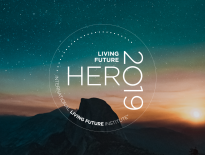Why is it so hard to make clean, safe products? The answer may surprise you. We all know supply chains are complicated, unique to each manufacturer and brand, and sprawled across the globe. Standards vary, and regulations can be a mosaic of rules and exceptions. But we often discredit the very real challenge of supplier engagement. This tricky dance around disclosure, reporting fatigue and proprietary ingredients can silence the most responsive of suppliers, and derail the most aggressive product transparency effort overnight.
Consumers and forward-thinking brands are increasingly demanding cleaner, less harmful products and materials. Until now, supply chains and chemical hazards have been notoriously difficult to manage – and communicating to consumers and buyers has suffered. This process has seen some progress, but there still is a system that too often loses sight of its higher purpose to clean up supply chains and products.
Luckily there are some inspiring solutions available today designed to untangle product transparency.
Enter technology. The disclosure of ingredient and chemical hazard information has become a critical factor, sometimes even a requirement, for the specification and procurement of many leading products.
Supplier engagement is surprisingly fixable with software solutions that benefit both the supplier and the manufacturer.
Technology has the ability to solve for issues like redundancy of requests, proprietary substance protections, and submission to standards with tools like workflow automation, secure cloud services, comprehensive regulatory and hazard screening, and API integration. If it is packaged in an intuitive, affordable interface, that increases engagement. And when it is recognized by industry partners and influencers, we have the start of a revolution in our supply chains.
Toxnot’s Public Materials: Helping Suppliers Buy In
The advent of powerful new software platforms like Toxnot that simplify supplier engagement around chemicals, and the significant expansion of 3rd party verifications, like Declare Labels, are disrupting the way we manage chemical hazards in our products – making it easier to analyze and clean up the world’s supply chains.

Software platforms like Toxnot work from both the supplier and disclosure side of the equation. Suppliers can upload their ingredients into the Toxnot platform for free with a simple login. This feeds into a searchable, secure cloud service for anyone looking to use these ingredients and materials in their own products – saving time, most importantly reducing the need to re-enter material data elsewhere.
Eliminating repeated emails to
different suppliers – a significant benefit in and of itself – helps with data
integrity and supplier relationships.
From here, product developers can collect complex data on the ingredients in their products, even if they are proprietary. They can explore alternative, potentially safer chemicals securely and screen against particularly hazardous compounds, see if materials are Red List free and so on.
Most importantly, Toxnot lets manufacturers automatically submit their product data directly to multiple standards like Declare, Red2Green, HPDs, C2C and GIGA Origin/Mindful Materials in a single click.
From here, a searchable, dynamic database grows. With proprietary protections available, this database becomes a powerful opportunity for marketing, visibility, and measurable growth in the green building space – from supplier, through designer, to reporting and transparency. Nuances in IP protections let users customize the visibility of sensitive data like chemical name or registry number, while allowing those receiving proprietary information to still see GreenScreen List Translator scores and RSL data.
Toxnot and the LP50
Some of the world’s biggest, most influential building owners & builders have committed to creating buildings with positive human & environmental benefits. Coupled with the growth of green building standards like LEED, WELL, and Living Building Challenge, suppliers now face increased demand for multiple material ingredient reports.
In response to a call to action from these architects, more than 40 of the world’s leading building product manufacturers have signed a letter intended to create an industry full of safe and responsibly-manufactured products.
This group of product manufactures, the LP50, recognizes the need to engage their own suppliers. They started a conversation with their own supply chains on furthering the creation of safe and transparently disclosed products and materials.

The LP50 are working with Toxnot’s supplier engagement platform and HPDC’s HPD Builder tool as the technology and disclosure solutions for their initiative. In response, Toxnot makes it easy for product manufacturers & suppliers to respond to LP50 customer requests – and for architects and designers to find products.
When materials are available in Toxnot’s database, they are visible to product manufacturers- and can support their product reporting (Declare Labels, HPDs and more). By working with Toxnot, supplier information directly feeds into a product manufacturer’s reporting- all from one material entry.
Toxnot is proud to be a technology partner in this global commitment to better, safer building products.
Want to Learn More?
Come meet us! Toxnot’s experts will be presenting at the Living Product Expo – October 8-10, 2019 in Nashville, Tennessee. This is an ideal opportunity to learn about all the latest developments in transparency and material health, and also to learn more about automated data exchange with HPD and Declare. Visit productexpo.living-future.org for details and registration
About Toxnot
Toxnot is a recognized leader in the movement to disrupt the notoriously complex supply chain chemical hazard landscape- and build creative solutions for businesses of all kinds. ILFI’s Declare program uses Toxnot for disclosure and reporting. Toxnot supports reporting to Declare, Red2Green, HPDs, C2C and GIGA Origin/Mindful Materials as well as providing optional compliance documentation (CAProp 65, REACH, RoHS and Conflict Minerals). By disclosing with Toxnot’s public materials profile, supplier information can then directly feed into a product manufacturer’s report regardless of the requested program standard. Toxnot provides a variety of supplier-controlled options for disclosing different levels of intellectual property.
In 2017, Toxnot won the Environmental Leader Product of the Year Award. For more info, visit www.toxnot.com



